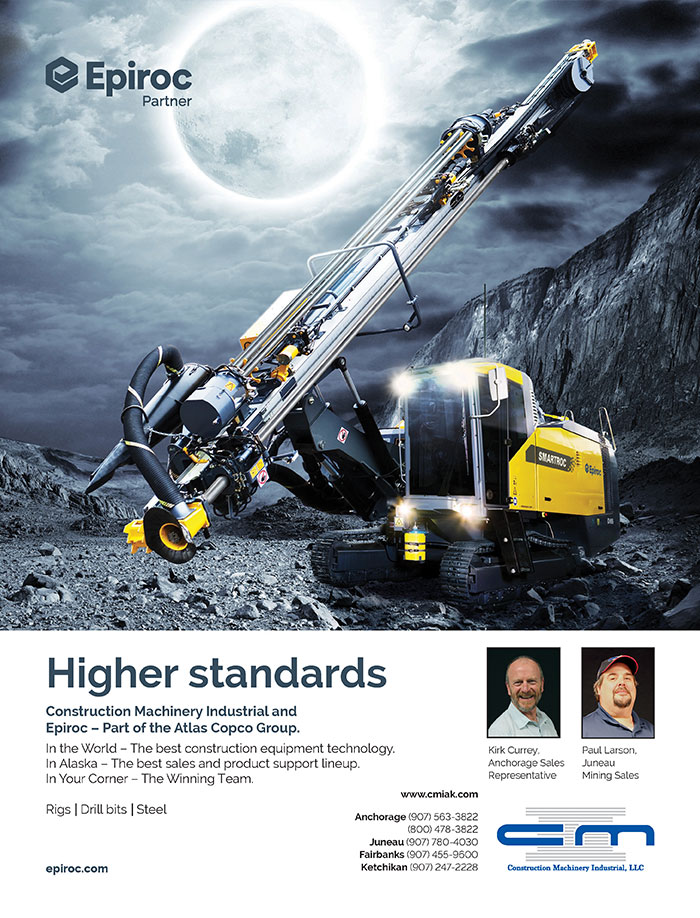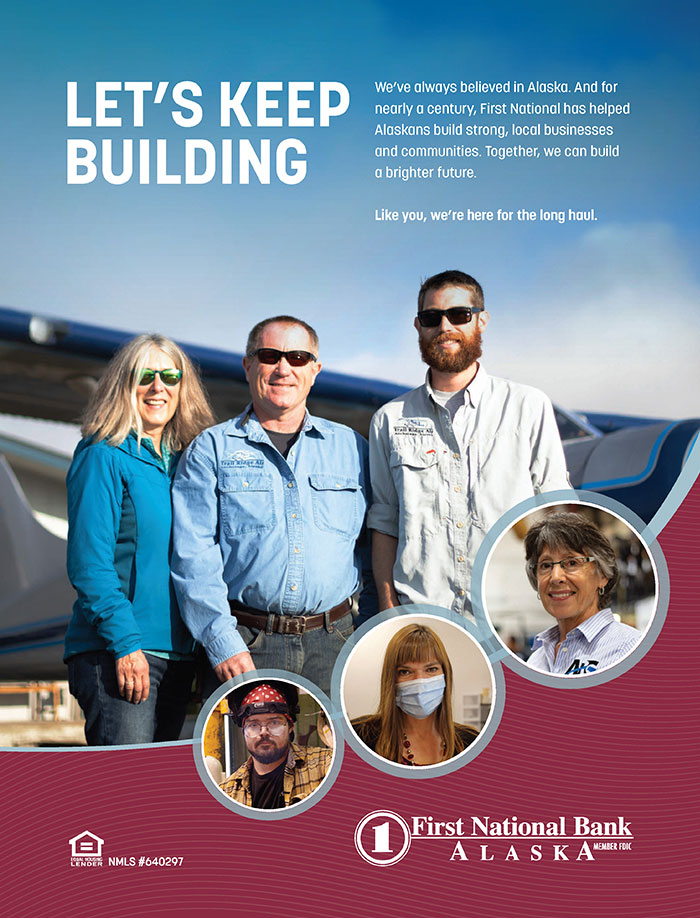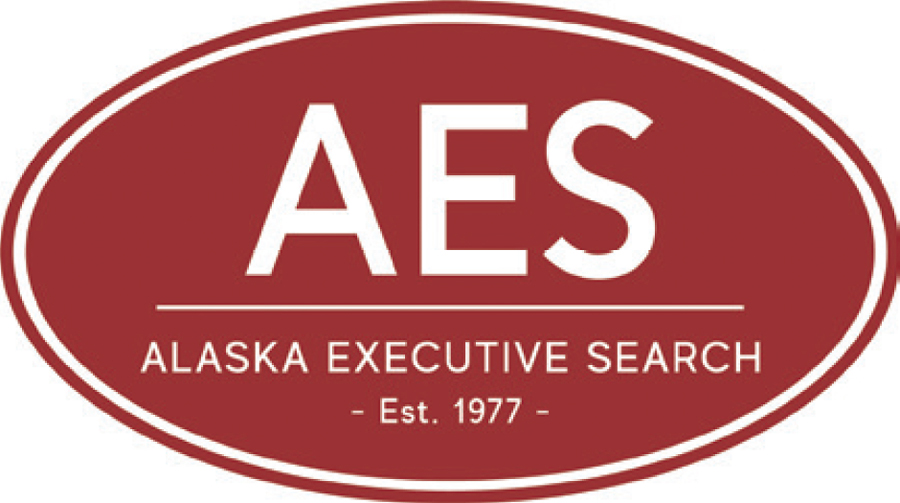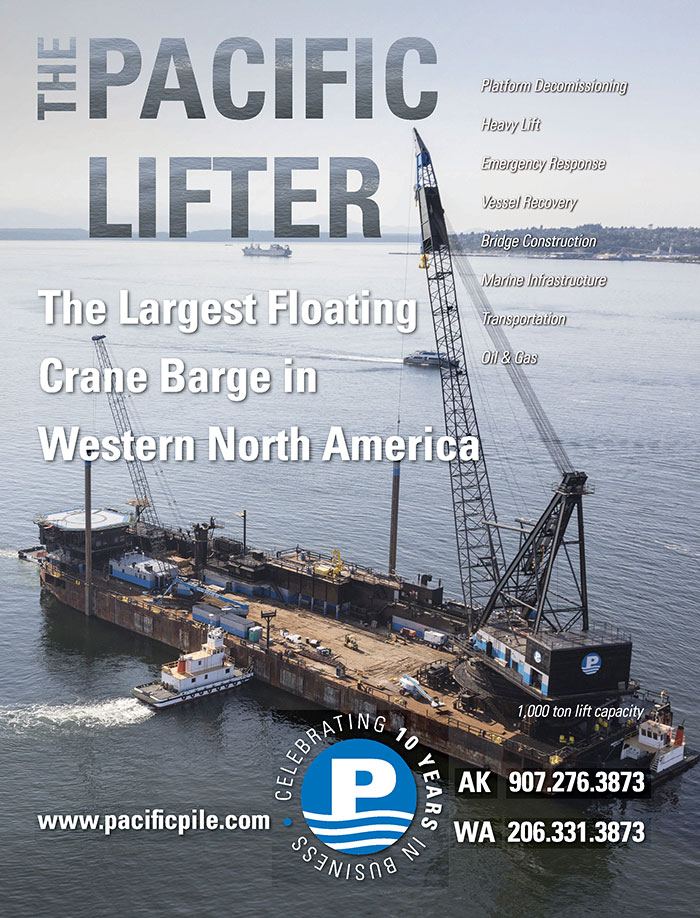Contents
Features
By Tracy Barbour
By Connor Lochmiter
Catching Up on Alaska’s Fisheries
By Vanessa Orr
By Tracy Barbour
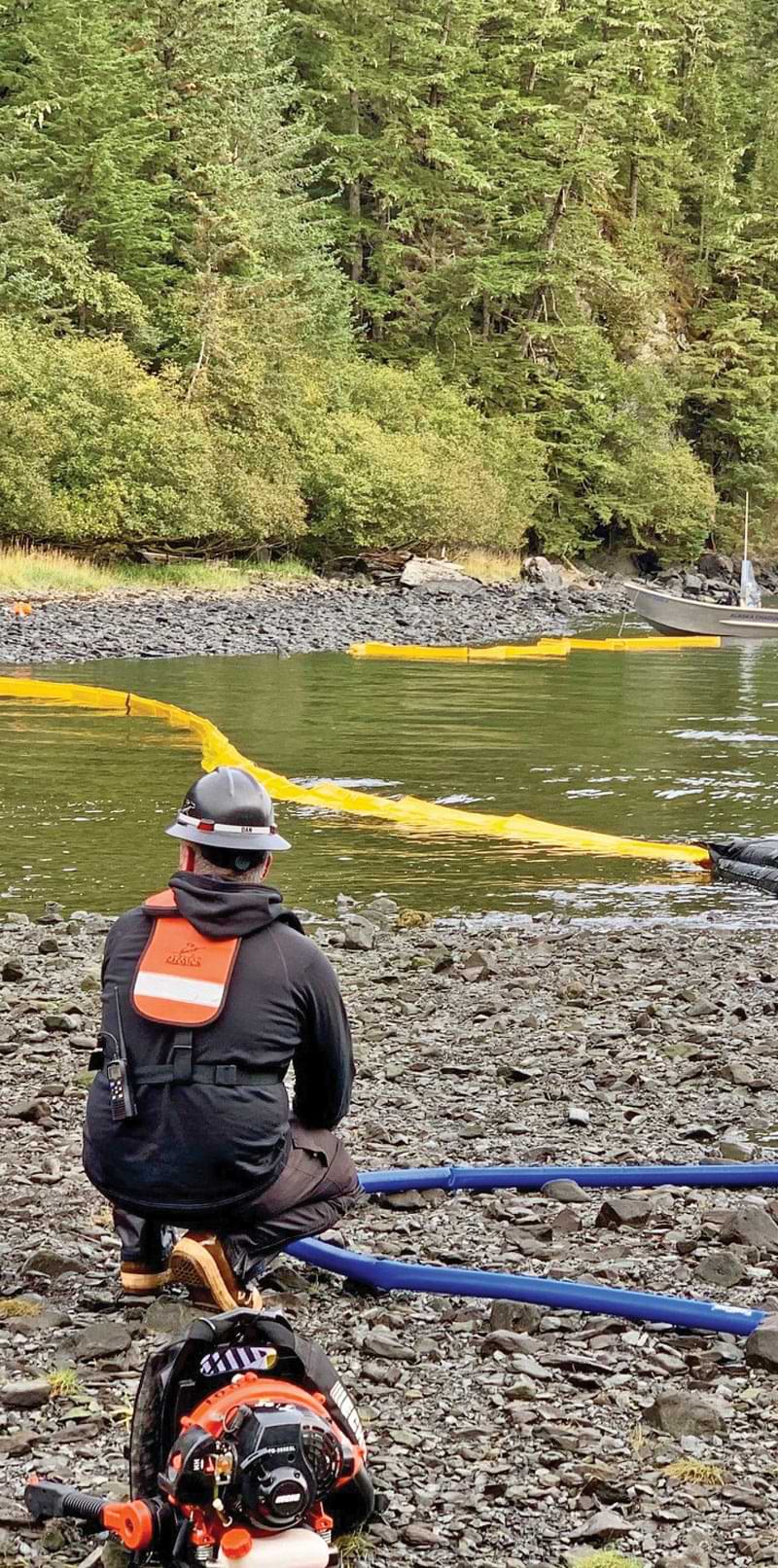
By Vanessa Orr
By Vanessa Orr

By Tracy Barbour
By Connor Lochmiter
Catching Up on Alaska’s Fisheries
By Vanessa Orr
By Tracy Barbour

Quick Reads

Investment is difficult in an uncertain regulatory and fiscal environment
About The Cover
A wise man once predicted that the times would be a-changin’. Turns out, he was right.
With yet another administration dishing out executive orders left and right, it would appear that change is back on the menu. But questions remain as to how fast… and in what direction?
This month’s cover story aims to address these questions. “Meeting in the Middle” explores the surprisingly dynamic relationship Alaskans have with fossil fuels and renewable energy in an increasingly carbon-concerned world. While the concern is certainly warranted and even acknowledged among Alaska’s petroleum players, one thing remains clear: the world still needs oil and gas.And the latest cover of Alaska Business inspires visions of how fossil fuels and clean energy can coexist.
Cover Art by Monica Sterchi-Lowman

Investment is difficult in an uncertain regulatory and fiscal environment
About The Cover
A wise man once predicted that the times would be a-changin’. Turns out, he was right.
With yet another administration dishing out executive orders left and right, it would appear that change is back on the menu. But questions remain as to how fast… and in what direction?
This month’s cover story aims to address these questions. “Meeting in the Middle” explores the surprisingly dynamic relationship Alaskans have with fossil fuels and renewable energy in an increasingly carbon-concerned world. While the concern is certainly warranted and even acknowledged among Alaska’s petroleum players, one thing remains clear: the world still needs oil and gas.And the latest cover of Alaska Business inspires visions of how fossil fuels and clean energy can coexist.
Cover Art by Monica Sterchi-Lowman
From the Editor
f one were to anthropomorphize Alaska and the oil and gas industry, it could be said they are in a long-term, committed relationship. It’s mostly stable: their friends would say they’re good for each other, but, like any decades-long relationship, they’ve experienced breathtaking highs (remember that time in ’82 when petroleum revenue accounted for 87 percent of the then-record high $4.1 billion unrestricted general fund? The ’80s… am I right?) and hard-hitting lows (April 2020 comes to mind) since the two met around 1902.
“The truly first Alaskan oil well with commercial production was completed in 1902 in rugged, coastal territory… the Alaska Steam Coal & Petroleum Syndicate produced oil near the remote settlement of Katalla on Alaska’s southern coast. The small oilfield also led to construction of Alaska Territory’s first refinery,” says the American Oil & Gas Historical Society.

Kerry Tasker
Billie Martin
press@akbizmag.com
Postmaster:
Send address changes to
Alaska Business
501 W. Northern Lights Blvd. #100
Anchorage, AK 99503
s a new decade dawns, even the most isolated communities in Alaska are becoming more connected to the rest of the state—and world—thanks to terrestrial microwave, subsea fiber, satellite, and other technology. Alaska’s leading telecommunications companies are making this possible through continuous investments in their infrastructure, improving connectivity in remote areas from the North Slope to Western Alaska to the Aleutian Islands.
Alaska Communications is combating healthcare disparity by connecting its rural healthcare business partners with access to the technology they need to offer these important services in their local communities. Access to telecommunications services, specifically broadband, has many positive impacts for both rural Alaska residents and businesses, according to Jim Gutcher, vice president of strategy and product management at Alaska Communications. “It helps connect people with critical services, like healthcare and education,” he says. “It can also improve quality of life by providing a link to family and entertainment options.”
s a new decade dawns, even the most isolated communities in Alaska are becoming more connected to the rest of the state—and world—thanks to terrestrial microwave, subsea fiber, satellite, and other technology. Alaska’s leading telecommunications companies are making this possible through continuous investments in their infrastructure, improving connectivity in remote areas from the North Slope to Western Alaska to the Aleutian Islands.
Alaska Communications is combating healthcare disparity by connecting its rural healthcare business partners with access to the technology they need to offer these important services in their local communities. Access to telecommunications services, specifically broadband, has many positive impacts for both rural Alaska residents and businesses, according to Jim Gutcher, vice president of strategy and product management at Alaska Communications. “It helps connect people with critical services, like healthcare and education,” he says. “It can also improve quality of life by providing a link to family and entertainment options.”
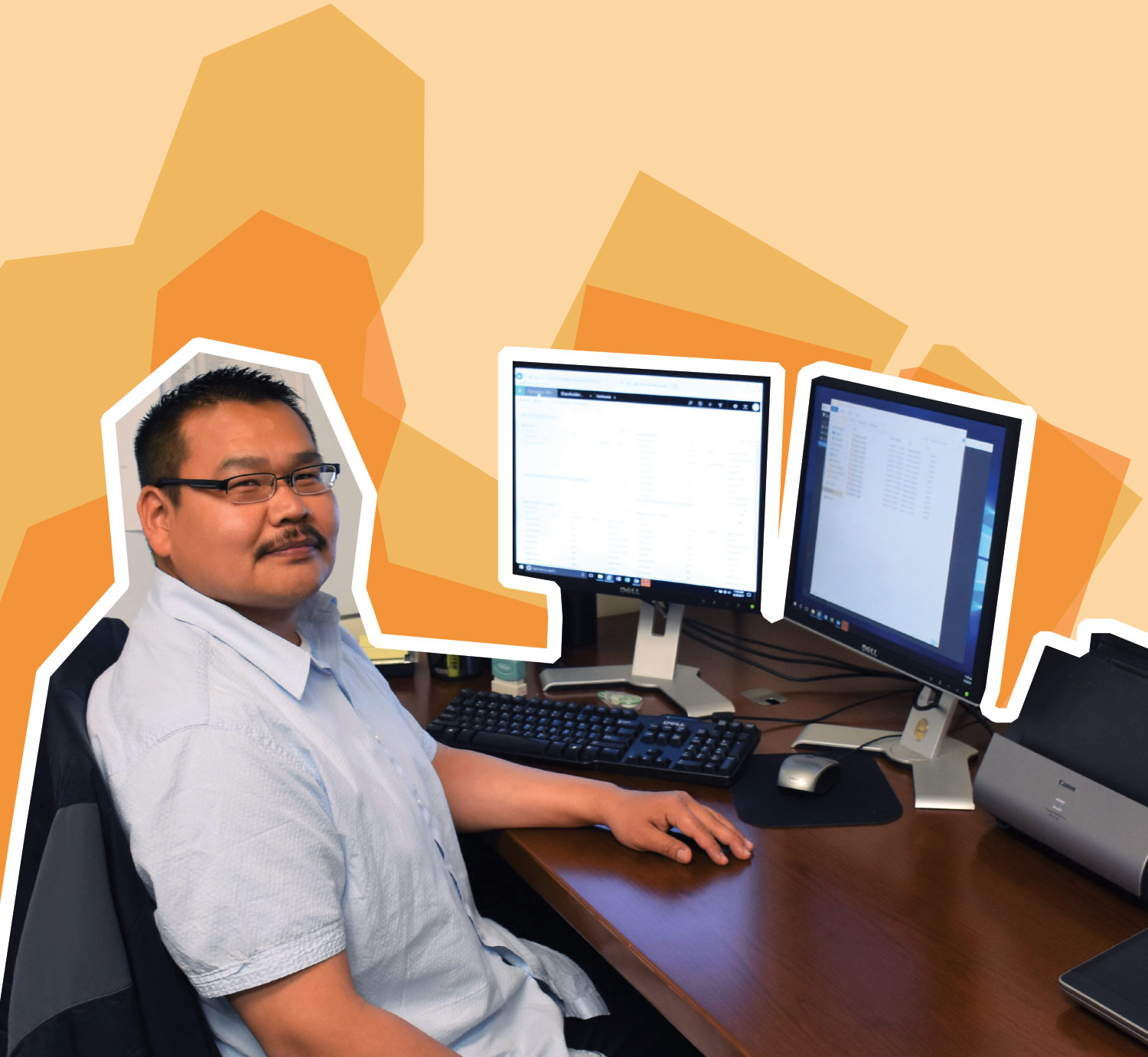
any entry-level employees dream of working their way through the ranks to attain management positions or perhaps someday becoming corporate CEOs. And while they may not all end up in the proverbial corner office, shareholder hire helps Alaska Native corporation (ANC) shareholders and descendants begin climbing that corporate ladder quickly.
Federal law allows Alaska Native corporations that were formed by ANCSA to practice shareholder hiring preference, letting the corporations prioritize employment opportunities for ANC shareholders and their descendants.
culture
and
homelands.
And by funding programs in our traditional homelands and beyond, we’re cultivating the next generation of Tlingit, Haida and Tsimshian leaders, scholars and culture bearers.

here’s an infinite supply of clean energy hidden in Alaska—and it’s right under our feet.
By now, most of the state’s residents have probably heard that their home is one of the most geothermally active regions in the world, with the Ring of Fire and countless hot springs decorating the landscape. And while tapping into geothermal heat is by no means a new concept, the resource does have certain advantages over other renewables like wind and solar, particularly as they relate to issues of availability.
But if this is common knowledge and the tech is readily available, then why hasn’t the state been able to capitalize on this opportunity?
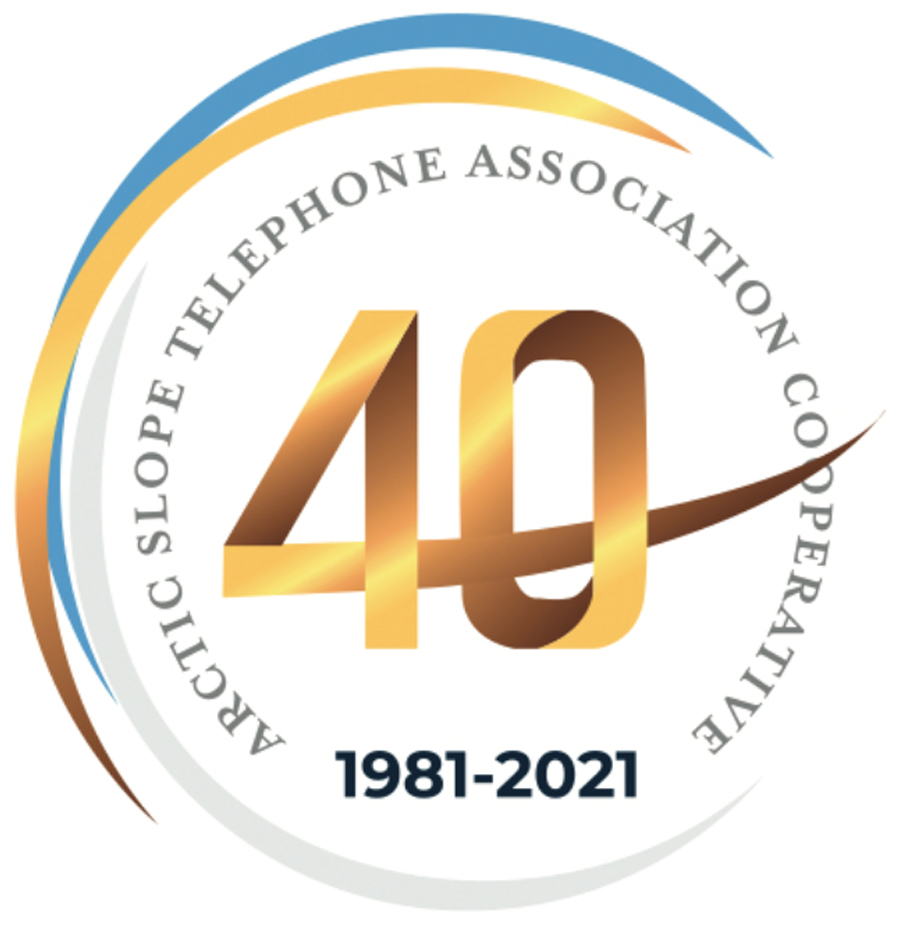

his year, Arctic Slope Telephone Association Cooperative, Inc. (ASTAC) is celebrating a major milestone: 40 years of serving North Slope residents. Anchorage based ASTAC provides broadband Ethernet and Internet; 4G wireless; and local and long-distance services to Point Lay, Point Hope, Atqasuk, Kaktovik, Utqiagvik, Anaktuvuk Pass, Wainwright, Nuiqsut, and Deadhorse.
ASTAC has invested heavily to build out its network. Since 2015, the member-owned cooperative has installed over 62 miles of fiber networks connecting almost 2,000 locations and made significant strides with modernizing its wireless network. Recently, ASTAC turned up three new 4G Long Term Evolution (LTE) sites on the Dalton Highway to provide much-needed wireless coverage–and enhanced safety–from the Brooks Range to Dead horse. It also launched Home Internet 25+, the North Slope’s first and only 25-megabits-per-second Internet service, and has initiated projects to bring high-speed broadband to Kaktovik and Atqasuk.
“We’re here to serve the members, and that plays a large role in our investments and our ability to be here for the long haul,” CEO/General Manager Jens Laipenieks says.
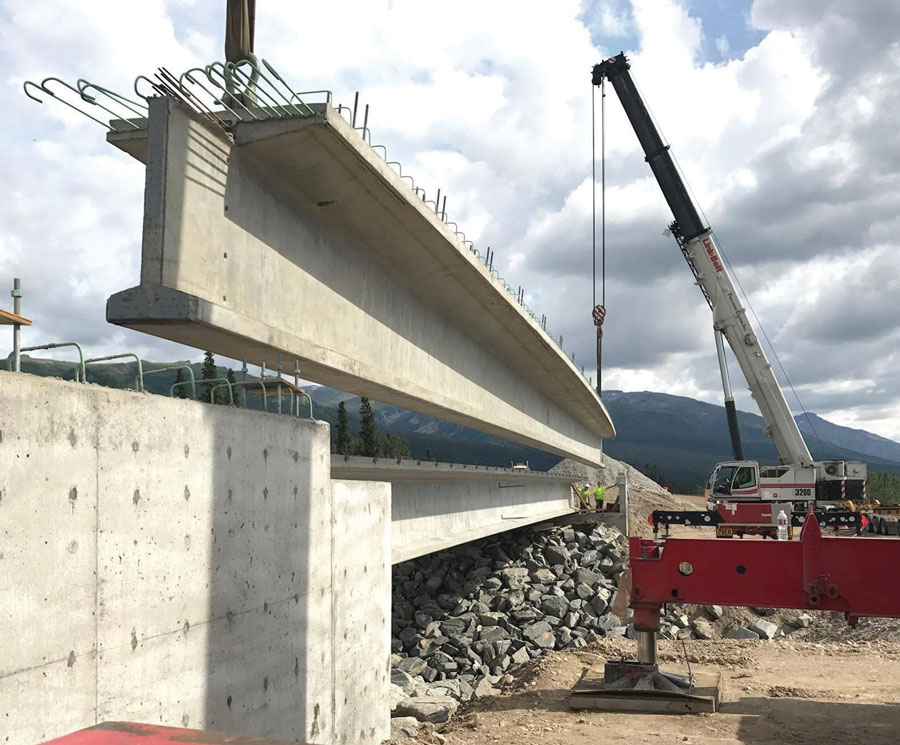
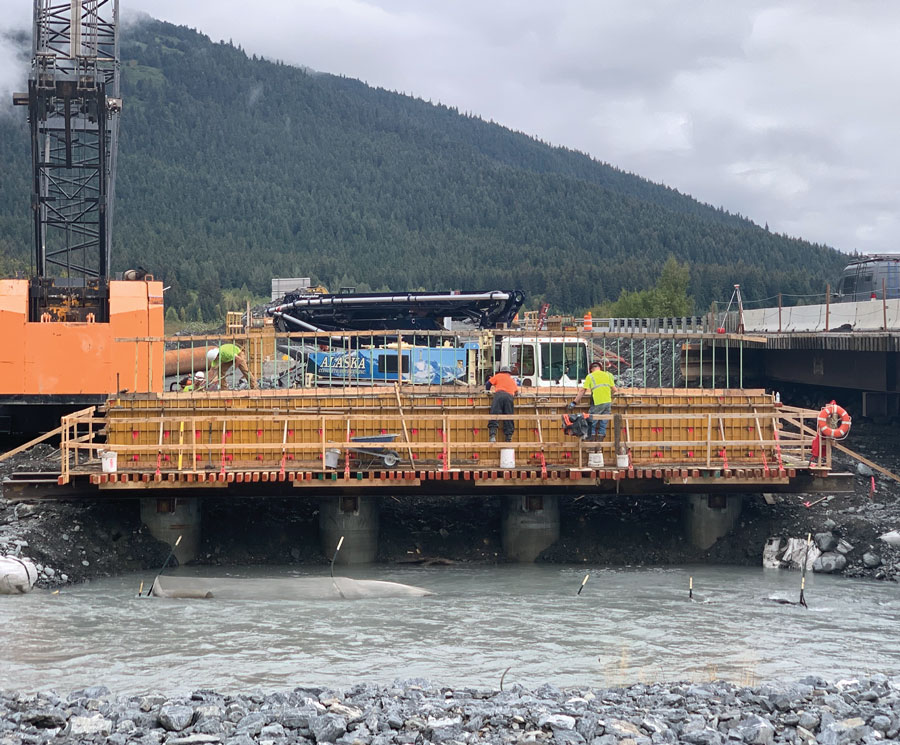
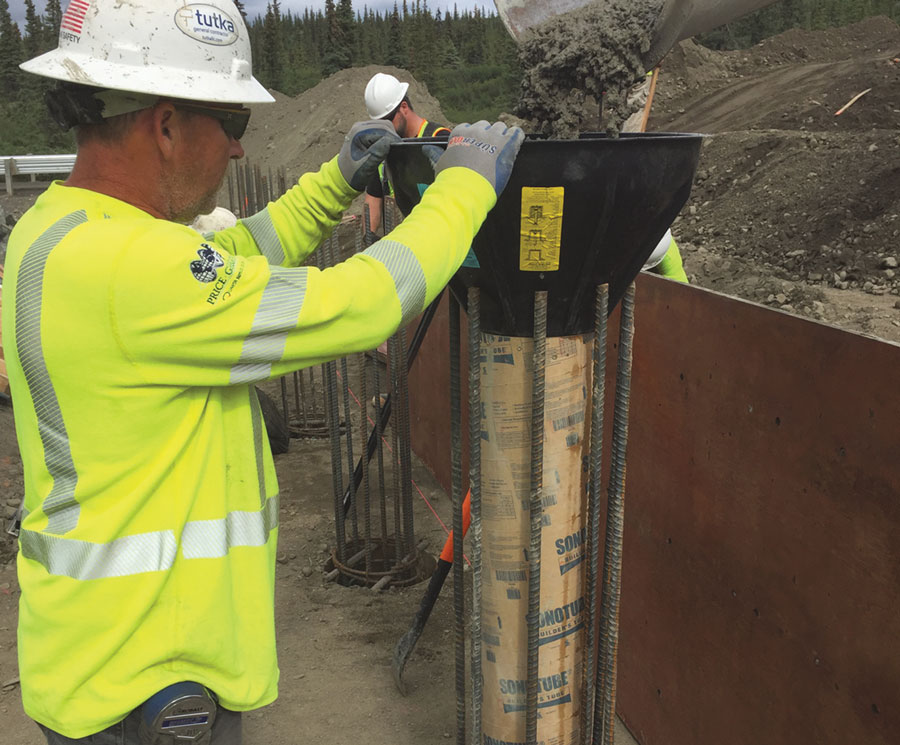
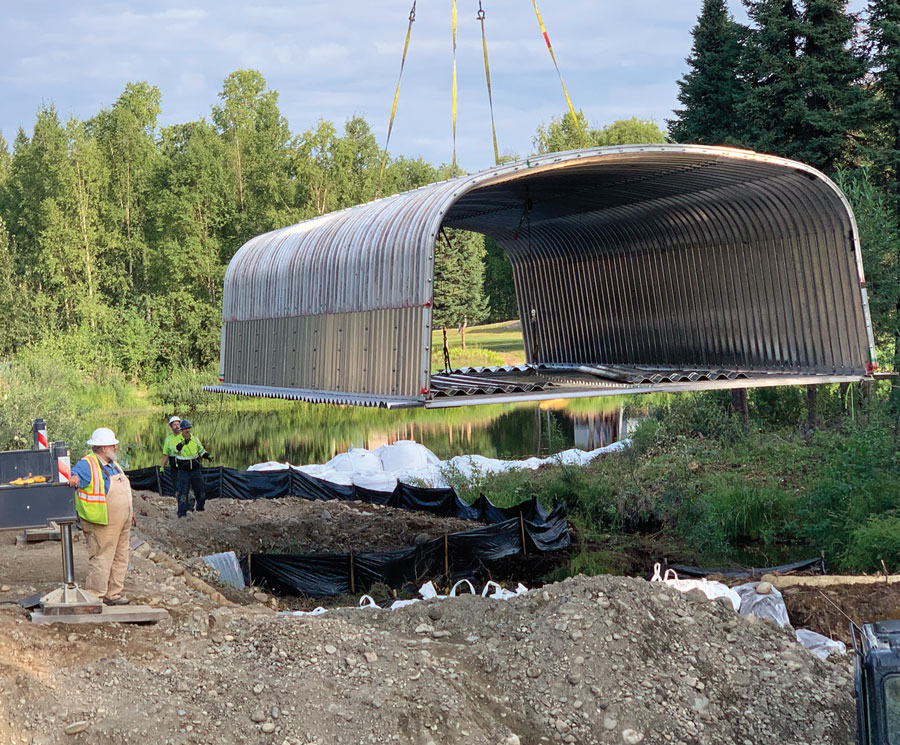

Going On in
ANWR?
onsidering how far away the Alaska National Wildlife Refuge (ANWR) is from almost anything, maybe it makes sense that the road to any development there has proved long—and convoluted and full of protest signs.
It’s a highly contested area in which, to date, not much has really happened. For many, that’s the point: The Wilderness Society, an organization with the stated mission “to protect America’s wild places” has asserted that it is “committed to ensuring that drill rigs never touch ground within the Arctic Refuge and that, eventually, the entire refuge will be permanently protected.”

ormed nearly a century ago, Papua New Guinea-based Oil Search entered Alaska’s oil and gas scene in 2018 with a $400 million purchase of North Slope oil leases from Armstrong Energy and GMT Exploration. The purchase included interests in the Nanushuk oil field in the Pikka Unit, one of the largest conventional US oil discoveries in thirty years, and the Horseshoe block.
“We entered into Alaska for new growth and to diversify our operations, both geographically and for a mix of oil and gas production,” Executive Vice President of Alaska Bruce Dingeman told attendees at the Alaska Support Industry Alliance’s Meet Alaska conference in March.
hile the lion’s share of attention on Alaska’s oil and gas industry centers on the North Slope, the Cook Inlet region is still home to twenty-eight producing oil and gas fields on- and offshore.
Between rigs operating in the inlet itself and refineries based in areas like the Kenai Peninsula, Cook Inlet is a crucial—and sometimes overlooked—piece of Alaska’s oil and gas industry.

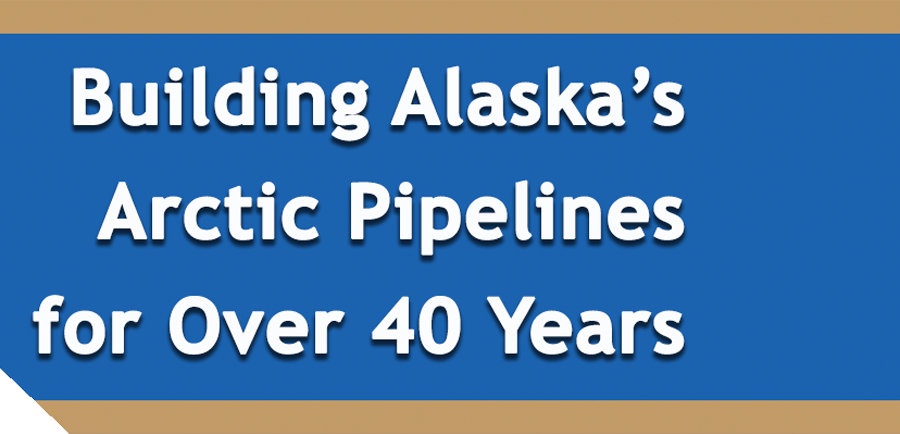
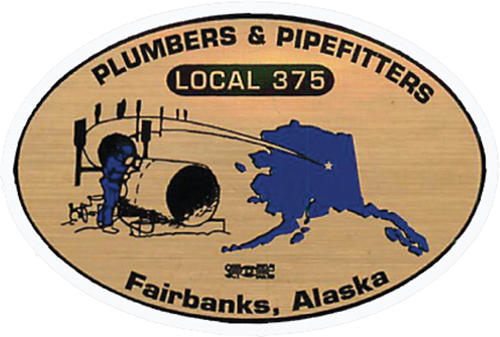

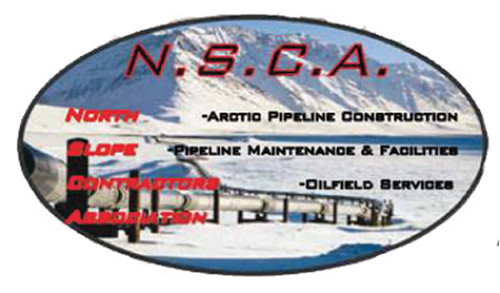



n January, when the Biden administration announced its ban on the future sale of oil and gas leases on federal land, the news understandably ruffled the collective feathers of Alaska’s oil and gas industry. The announcement could be—and has often been—framed as a direct attack on one form of energy development in favor of another.
But a closer look at insights from parties in both the oil and gas and renewable energy sectors reveals that as far as Alaska is concerned, the two energy industries aren’t necessarily at odds. In fact, many industry experts agree that oil, natural gas, solar, hydro, geothermal, and tidal can all be developed in Alaska without one encroaching on the other’s economic importance to the state. Combined, petroleum and renewables are a positive one-two punch for Alaskans, not ideologically opposed platforms locked in some industrial grudge-match. There are similarities between oil and gas and green energy as well as differences—all of which are necessary for the dynamic relationship to work in the first place.
But for all the hype surrounding the green energy and fossil fuel debate, both platforms exist in the state to serve different functions; while oil and gas continue to bring in state revenue through royalties and a tax structure (not to mention money for Permanent Fund Dividends), green energy serves to keep more money in individual, utility-paying Alaskans’ pockets via energy efficiency savings. Less use of traditional energy sources like diesel (especially in rural Alaska) and more reliance on platforms like solar and wind mean lower long-term costs for consumers.
n January, when the Biden administration announced its ban on the future sale of oil and gas leases on federal land, the news understandably ruffled the collective feathers of Alaska’s oil and gas industry. The announcement could be—and has often been—framed as a direct attack on one form of energy development in favor of another.
But a closer look at insights from parties in both the oil and gas and renewable energy sectors reveals that as far as Alaska is concerned, the two energy industries aren’t necessarily at odds. In fact, many industry experts agree that oil, natural gas, solar, hydro, geothermal, and tidal can all be developed in Alaska without one encroaching on the other’s economic importance to the state. Combined, petroleum and renewables are a positive one-two punch for Alaskans, not ideologically opposed platforms locked in some industrial grudge-match. There are similarities between oil and gas and green energy as well as differences—all of which are necessary for the dynamic relationship to work in the first place.
But for all the hype surrounding the green energy and fossil fuel debate, both platforms exist in the state to serve different functions; while oil and gas continue to bring in state revenue through royalties and a tax structure (not to mention money for Permanent Fund Dividends), green energy serves to keep more money in individual, utility-paying Alaskans’ pockets via energy efficiency savings. Less use of traditional energy sources like diesel (especially in rural Alaska) and more reliance on platforms like solar and wind mean lower long-term costs for consumers.
Industry and
Economic
Development
in Alaska

business with us year after year.

ollowing the purchase of BP’s 26 percent interest in Prudhoe Bay in June 2020, Hilcorp became the state’s second-largest oil producer in Alaska.
This year, the privately held company has said it will begin a fast-paced gas and oil exploration plan at its Whiskey Gulch prospect on the Kenai Peninsula, bring gas at its Seaview prospect near Anchor Point to market, and drill a bevy of test wells for future gas development in Cook Inlet. On the North Slope, Hilcorp plans to continue BP’s path of development at Prudhoe Bay and continue with an ongoing and promising collaboration with the University of Alaska Fairbanks and other groups to pull heavy oils from mature wells.

821 N Street, Suite 201, Anchorage, AK 99501
akexec.com | bmgak.com
907.276.5707
orth Slope workers fly in to work on a Boeing 737 owned by one of the borough’s largest oil producers and then spend two weeks working 12- to 16-hour shifts while living in camps alongside their coworkers. Or that used to be a standard operating procedure before the worldwide pandemic.
So what happened in 2020 on the North Slope, where people live and work in close, communal environments and a novel coronavirus pandemic forced everyone to take a little more space?
Alaska’s oil and gas industry is accustomed to the yo-yoing of economic cycles, but COVID-19 was a whole new issue to bounce back from. It caused companies to quickly reassess and implement new safety measures, such as mandating health check-ups for employees before they could travel to various locations from Fairbanks or Anchorage.

Span Alaska’s new Anchorage Service Center (ASC) means even better service and more options for our customers statewide.
Our new facility increases our capacity, improves our security, offers customizable storage areas, and streamlines freight handling — all to enable faster, smoother, and more consistent delivery of your cargo to its final destination.
Stop by our new ASC and see what Span Alaska can do for you. Or, to schedule a pickup or find the terminal nearest you, call 1-800-257-7726 or visit us at spanalaska.com.
Year Founded/Est. in Alaska | Worldwide/Alaska Employees:
2010/2010 | 6/6
Year Founded/Est. in Alaska | Worldwide/Alaska Employees:
2009/2009 | 5/1
700 G St., PO Box 100360
Anchorage, AK 99510
conocophillipsalaska.com
907-276-1215
Year Founded/Est. in Alaska | Worldwide/Alaska Employees:
1952/1952 | 9,680/1,110
Are you ready?
Are you ready?

Big Shovels
ining is the tedious and feverish work of digging precious things out of the ground. Gold mining in Alaska carries with it the sepia-toned nostalgia of 49ers carefully sifting through the infinite waters for tiny flakes of wealth. Those in the industry call this strategy of mining placer mining. And while a few may have made their fortunes that way, both laziness and ambition caused people to search for a more direct path to success. Placer mining is feasible because water flows around and through rock formations with gold veins, slowly eroding the gold and refining it as the water flows downstream. But why not just get the gold directly from the vein?
Lode mining, or hard rock mining, is mining minerals from their very source. As the name implies, hard-rock mining requires a lot more force than letting a stream gently move sediment through settling screens. Even with an army of whistling dwarves to manually chip away at the stone, first one must answer the challenge of getting to the mineral deposit, which is often deep underground. Gold is not the only valuable resource at stake; Alaska mining also produces silver, zinc, lead, and other minerals in smaller quantities. Mining in Alaska has grown to the point that minerals are Alaska’s second largest export commodity.
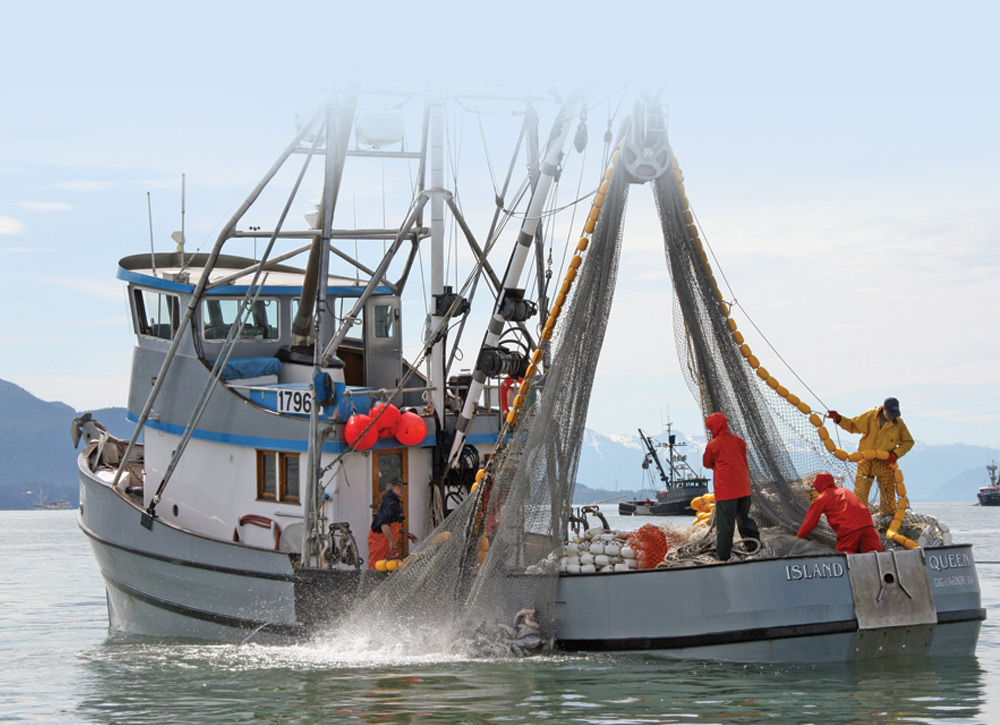
ADF&G
Alaska’s Fisheries
here’s no doubt that 2020 wasn’t a good year, and this is especially true for those in Alaska’s fishing industry. Between having to take pandemic precautions, seeing smaller runs of some fish species, and losing markets as restaurants throughout the state shut down, it was not a banner time. And though nothing is set in stone for 2021, there’s hope that the industry, at least in some areas, will be able to recover.
+1.907.224.3198 | info@jagmarinegroup.com
More Cost-Effective,
Competitive Rates,
at one of the Best Equipped
Shipyards in Alaska.
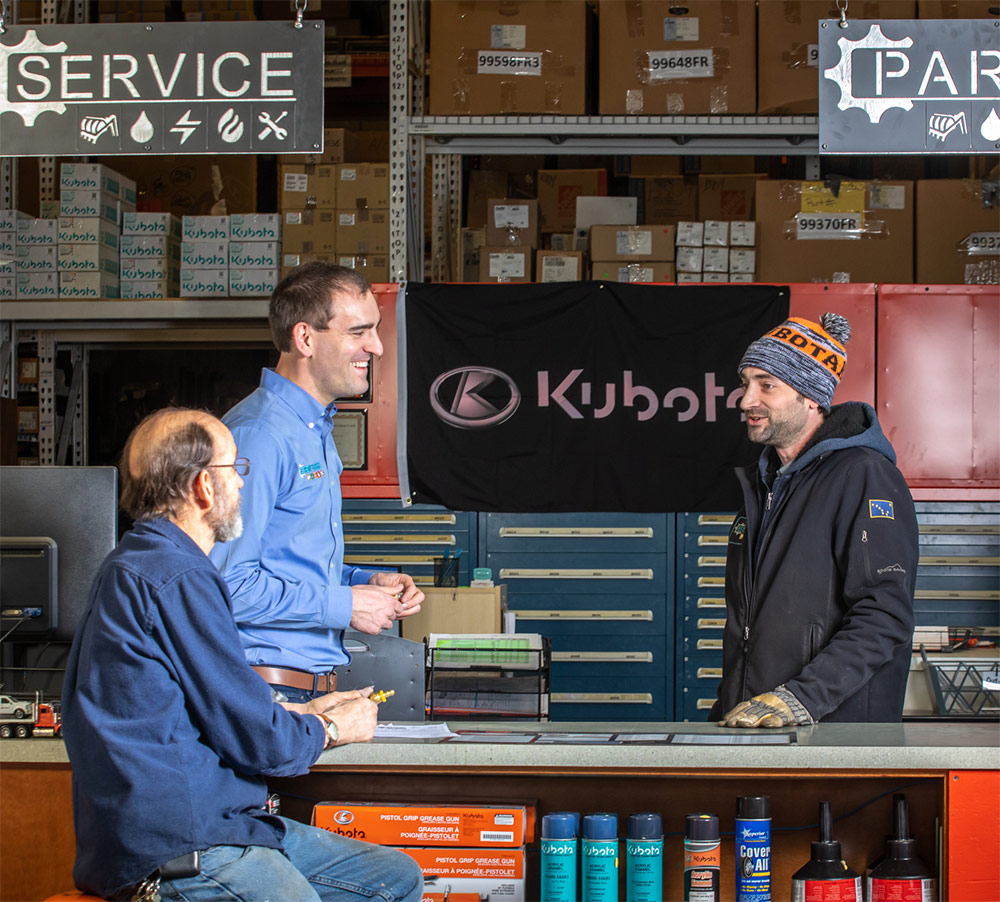

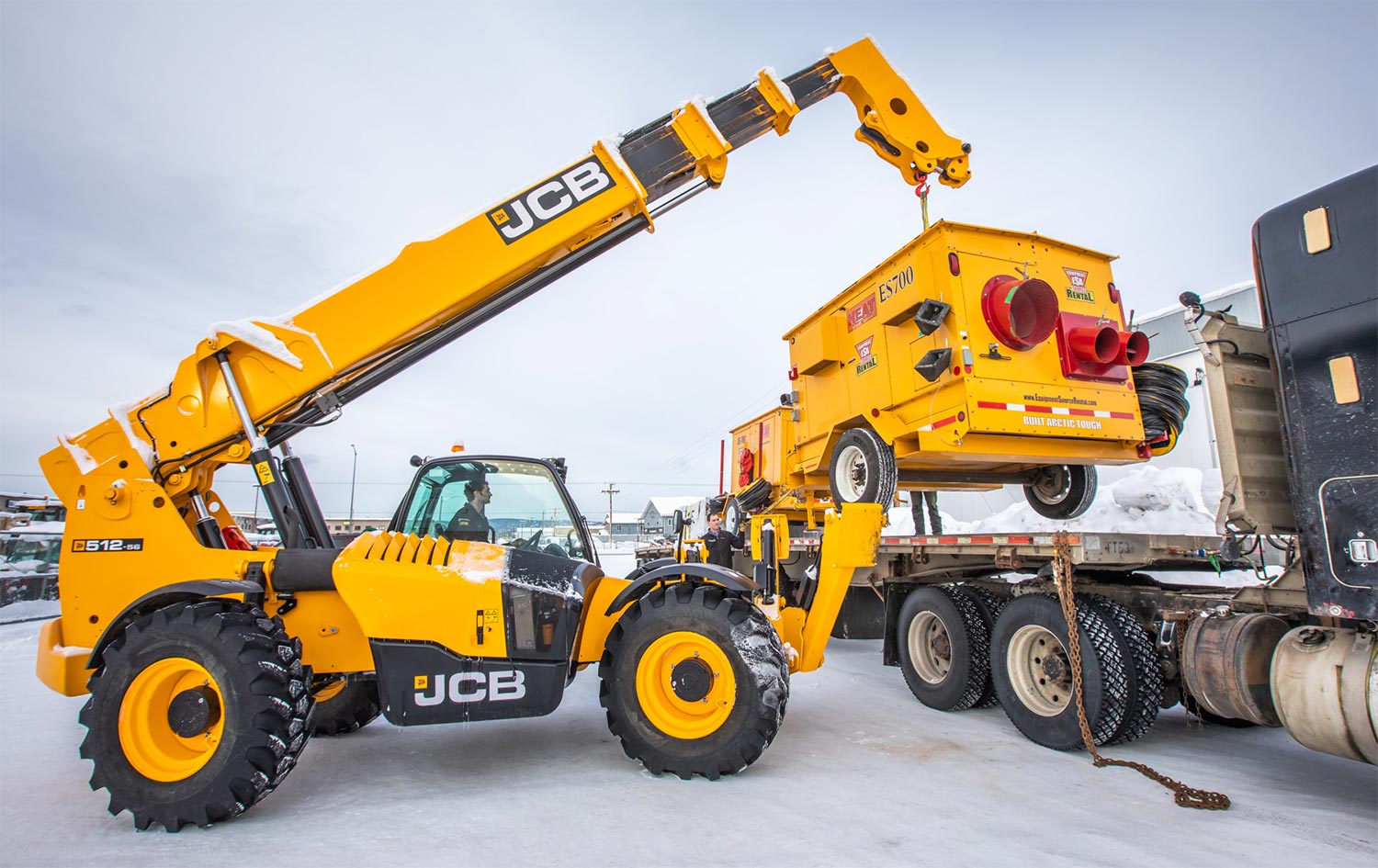
Fairbanks (907) 458-9049
Williston (701) 774-5312
Resolve Marine Group
laska’s thriving maritime industry is supported by a variety of environmental companies and other organizations that help clear industrial debris from the state’s waterways and shoreline. These entities perform a multitude of duties to keep Alaska’s ecosystem as pristine as possible while combating a never-ending problem.
Marine industrial debris—which often makes its way to the land—is a significant problem in Alaska. It involves every type of waste material that you can think of: from wrecked airplanes to fishing boats and hurricane debris, says Chris Pallister, founder of Gulf Keepers of Alaska (GoAK). So what’s the most common type of marine debris Pallister sees? “By tonnage, it’s commercial debris: massive nets, big bundles of line, all kinds of buoys and fenders, fishing totes, drums, barrels, baskets, and crates,” he says. “Every time a boat goes down, you wind up with Styrofoam and busted boat components.”




Engineering Design
Phase I & II ESA
Industrial Hygiene / CIH
Environmental Remediation
Hazardous Materials Management
Certified Inspection Services
HSE Program Development
Contingency Planning
Energy Efficiency
Sanitary Surveys
Engineering Design
Phase I & II ESA
Industrial Hygiene / CIH
Environmental Remediation
Hazardous Materials Management
Regulatory Compliance Support
Certified Inspection Services
HSE Program Development
Contingency Planning
Energy Efficiency
Sanitary Surveys
907-452-5688
ANCHORAGE
907-222-2445
JUNEAU
907-586-6813
 480,551 barrels
480,551 barrels -4% change from previous month
-4% change from previous monthSource: Alaska Department of Natural Resources
 $64.73 per barrel
$64.73 per barrel -3.9% change from previous month
-3.9% change from previous monthSource: Alaska Department of Natural Resources
 351,042 Labor Force
351,042 Labor Force 6.6% Unemployment
6.6% Unemployment Source: Alaska Department of Labor and Workforce Development
Kotzebue, Alaska
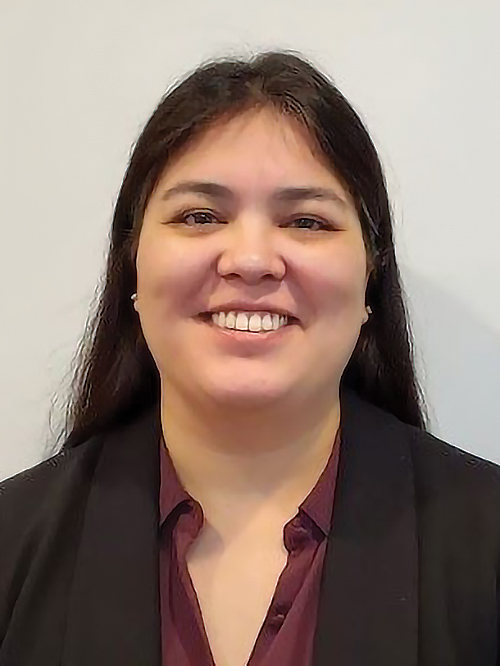
 Arctic IT added Ellie Carlo as Senior Technical Support Analyst to its IT technical support team. Originally from Koyukuk, Carlo received her AAS in information technology and system administration from UAF. She worked for Doyon Utilities (a Doyon, Limited company) for five years before moving to Anchorage.
Arctic IT added Ellie Carlo as Senior Technical Support Analyst to its IT technical support team. Originally from Koyukuk, Carlo received her AAS in information technology and system administration from UAF. She worked for Doyon Utilities (a Doyon, Limited company) for five years before moving to Anchorage.
 Coffman Engineers expanded its process engineering resources with Clayton Kruger obtaining his professional process engineering license. A graduate of Montana State University with a degree in chemical engineering and biological engineering, Kruger offers Coffman’s refining/oil and gas clients insight into their operational system performance through hydrocarbon processing modeling, process controls, safety relief and vessel/piping fitness for service, stress analysis, equipment and material selection, vessel design, industrial process, and piping system design for both brownfield and greenfield designs. Kruger has been with Coffman since 2015 and continues to take the company’s industrial mechanical designs to new innovative levels.
Coffman Engineers expanded its process engineering resources with Clayton Kruger obtaining his professional process engineering license. A graduate of Montana State University with a degree in chemical engineering and biological engineering, Kruger offers Coffman’s refining/oil and gas clients insight into their operational system performance through hydrocarbon processing modeling, process controls, safety relief and vessel/piping fitness for service, stress analysis, equipment and material selection, vessel design, industrial process, and piping system design for both brownfield and greenfield designs. Kruger has been with Coffman since 2015 and continues to take the company’s industrial mechanical designs to new innovative levels.



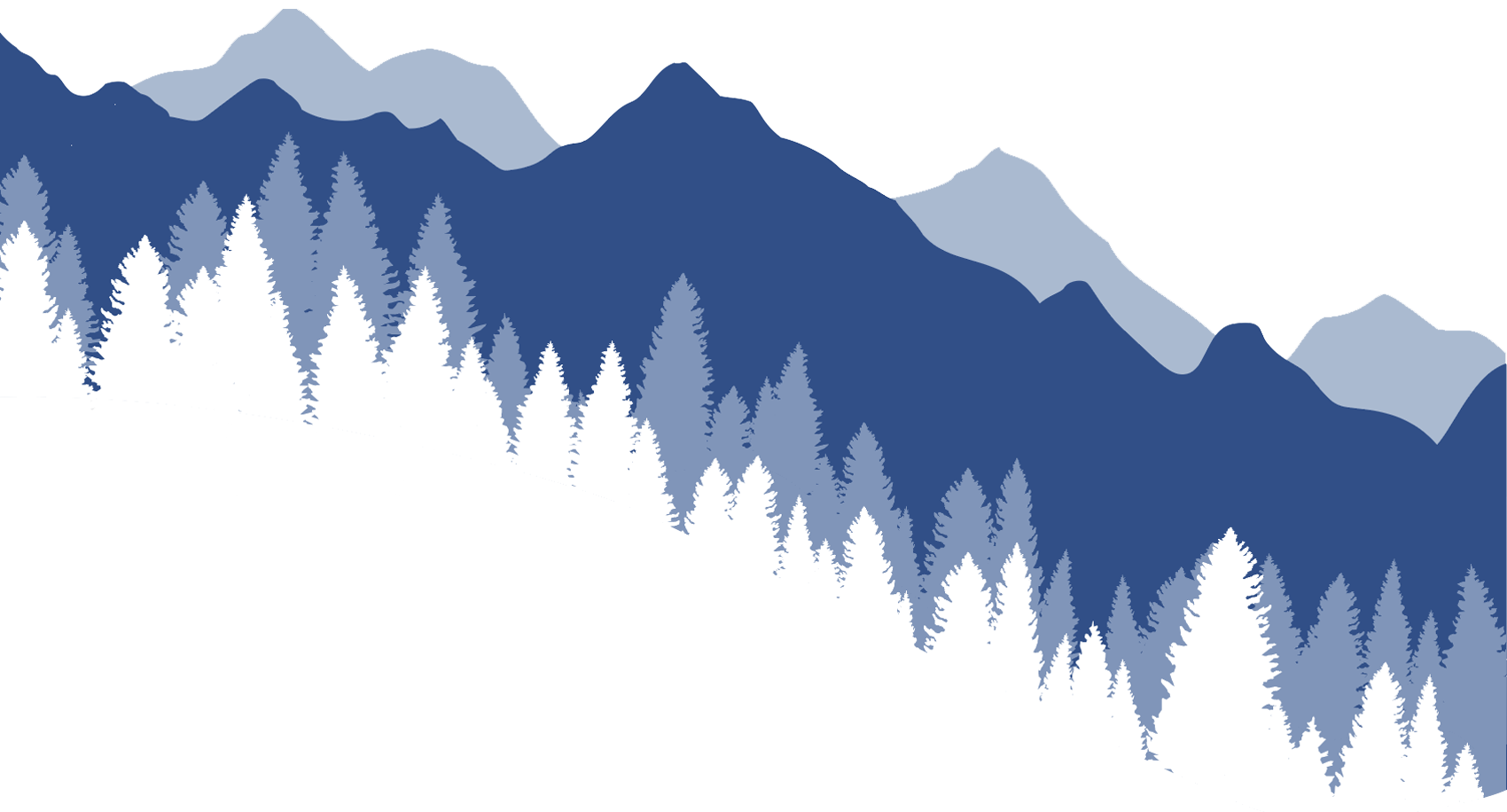
for Your Business Needs
Alaska Trends
s Alaskans, it can be easy to take our environment for granted.
With endless displays of nature and an abundance of resources in every direction, a short attention span could be forgiven. But like the crisp, clean air we breathe, there’s so much going on behind the scenes that one might not appreciate (or even consider). And for those not directly involved in the inner workings of the oiland gas industry, this rings particularly true.
Take an oil rig, for example. We all know what they do, but have you ever considered how they do it? This analogy also extends to the history of the storied industry itself.
Lucky for those reading May’s installment of Alaska Trends—we’re here to spell it out.
s Alaskans, it can be easy to take our environment for granted.
With endless displays of nature and an abundance of resources in every direction, a short attention span could be forgiven. But like the crisp, clean air we breathe, there’s so much going on behind the scenes that one might not appreciate (or even consider). And for those not directly involved in the inner workings of the oiland gas industry, this rings particularly true.
Take an oil rig, for example. We all know what they do, but have you ever considered how they do it? This analogy also extends to the history of the storied industry itself.
Lucky for those reading May’s installment of Alaska Trends—we’re here to spell it out.
At a Glance
[He laughs] No book on the nightstand but there’s a book in the queue—Colin Powell’s My American Journey.
United Way.
I turn off the phone.
We actually were trying to go to Spain and Portugal last fall and that got postponed, but we’re trying to do that again this fall.
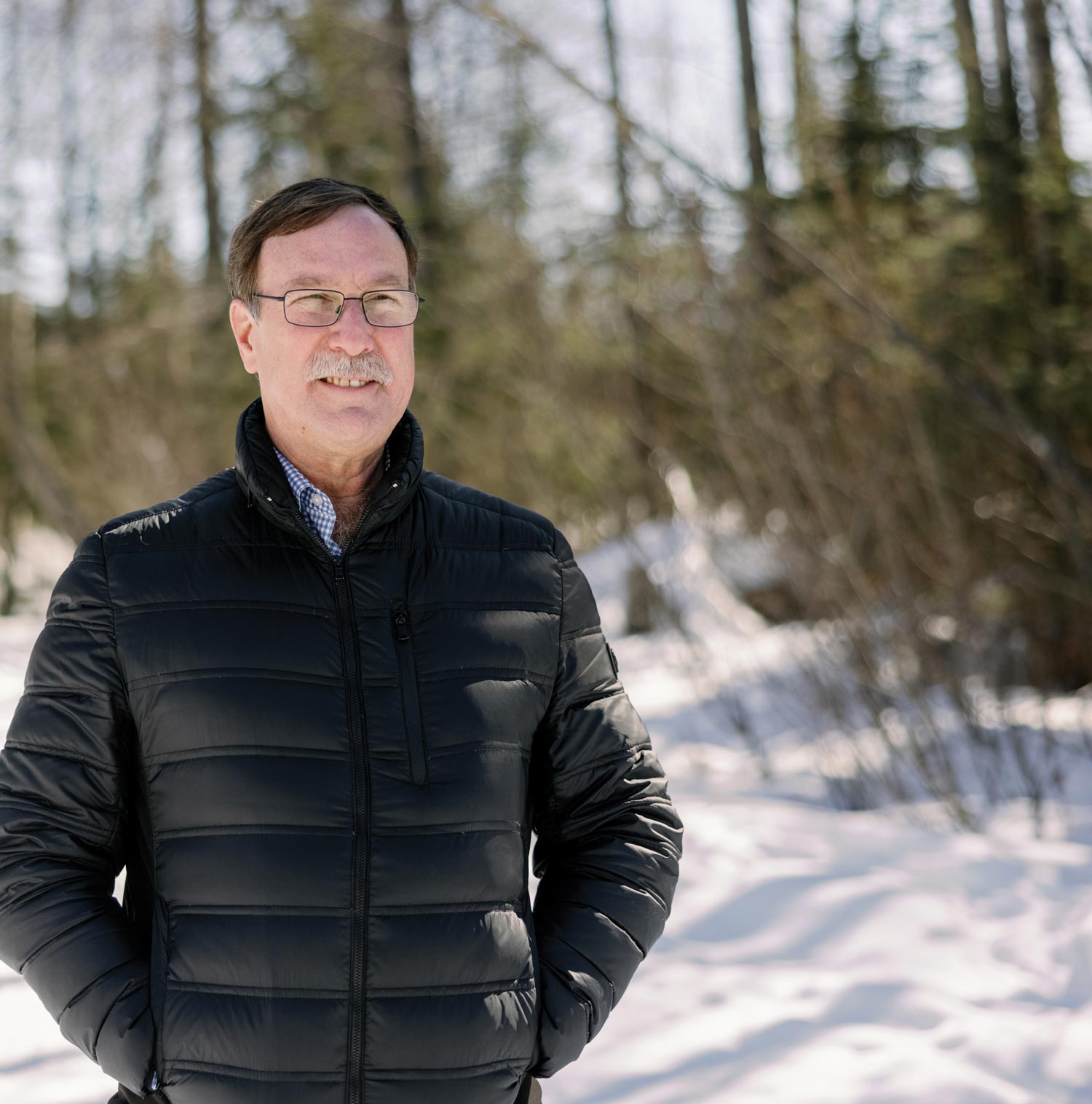
At a Glance
[He laughs] No book on the nightstand but there’s a book in the queue—Colin Powell’s My American Journey.
United Way.
I turn off the phone.
We actually were trying to go to Spain and Portugal last fall and that got postponed, but we’re trying to do that again this fall.
Off the Cuff
orty years ago, Mike Colombie packed his bags and went North in search of adventure. And it didn’t take long to find it—he received his pilot’s license only three years after landing in Alaska.
Colombie started with CONAM as a document control clerk and moved his way on up pretty dang quick, spending time as a field engineer and dabbling in project management. Today, Colombie serves as the construction firm’s president with twenty-five years of experience between CONAM and its sister company Price Gregory.


907.522.6466
907.895.9898
907.659.2000
907.456.2000
907.474.2000
907.335.5466

907.522.6466
The Rental Zone
907.474.2000
Delta Junction
907.895.9898
Prudhoe Bay
907.659.2000
Fairbanks
907.456.2000
Kenai
907.335.5466
Dynamic Routing!



